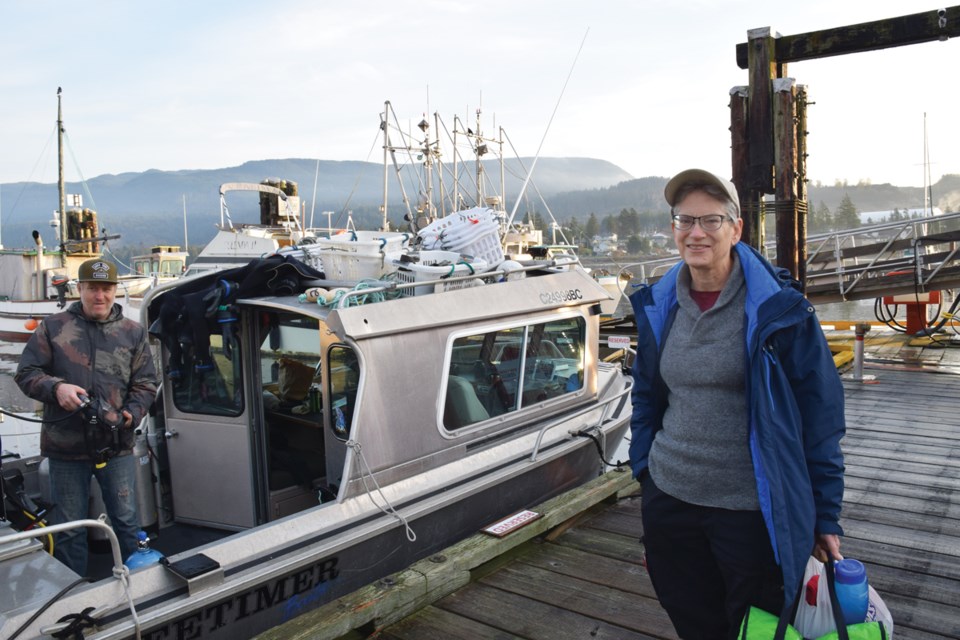Divers have been busy in the waters of West Porpoise Bay for the past two weeks, clearing debris off the ocean floor as part of the SeaChange Marine Conservation Society’s Salish Sea Nearshore Habitat Recovery Project.
Fisheries and Oceans Canada is putting $1.3 million into the project over five years. The money will pay for the cleanup in Porpoise Bay and similar efforts to restore eelgrass and estuarine habitat for salmon and forage fish in Howe Sound, the Gulf Islands, and Burrard Inlet.
Sarah Verstegen is the dive coordinator for the work currently underway in Sechelt.
She said the divers have been spending mornings working to load debris into baskets and then in the afternoon the crew switches to the Collective Effort, a small, flat-decked pontoon boat with a crane that can be used to hoist the material off the bottom.
The District of Sechelt and Sunshine Coast Regional District have been helping with the project by providing facilities, such as moorage at the Porpoise Bay wharf, and waiving tipping fees for the material that’s destined for the landfill. “Those in-kind contributions are huge for us,” Verstegen said.
She told Coast Reporter that the divers have found everything from car parts, microwave ovens and TVs to big sections of fishing net, some of which they think may be the remnants of herring pens that were built in the area in the mid-80s.
As of Tuesday, they’d filled about a dozen large two-cubic-metre totes – a similar size as the ones used at the recycling depots. Verstegen said they expect to fill a dozen more before they wrap up.
So far they’ve brought up around two tonnes of fish net alone.
Vertegen said they’re trying to recover as much of the netting as possible because getting it off the ocean floor is a “high value” return when it comes to saving fish and wildlife. “They keep [snaring fish]. Even after 30 years on the bottom,” she said.
The dive team is also focusing on removing debris from areas where it would do the most to help eelgrass recover.
Earlier this year a local community association hired diver and videographer Neil McDaniel, a part-time Sechelt resident, to film the ocean bottom between the government wharf and MacKenzie Marina, which is the same area the SeaChange team has been working in.
The video can be seen on YouTube at youtu.be/R1QdXwqbtps



